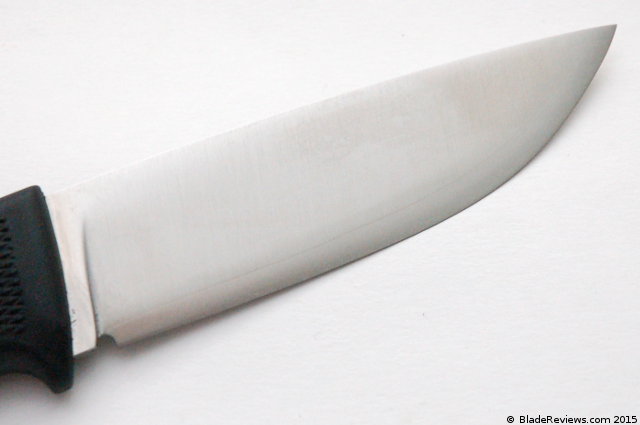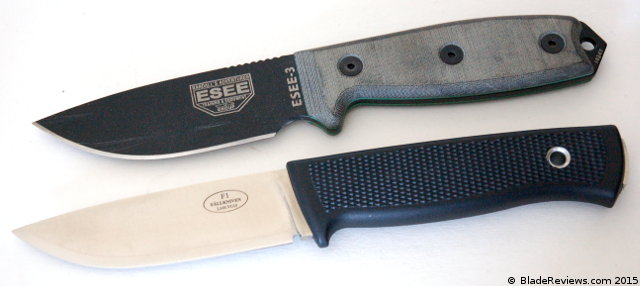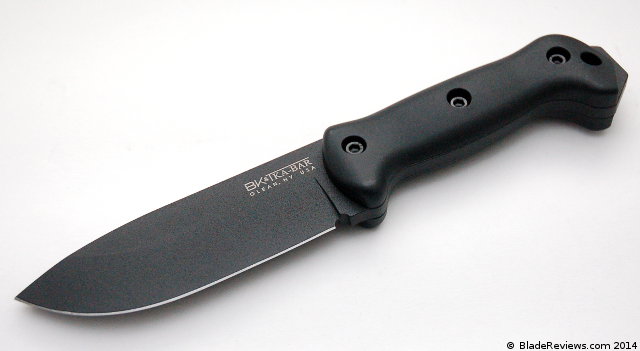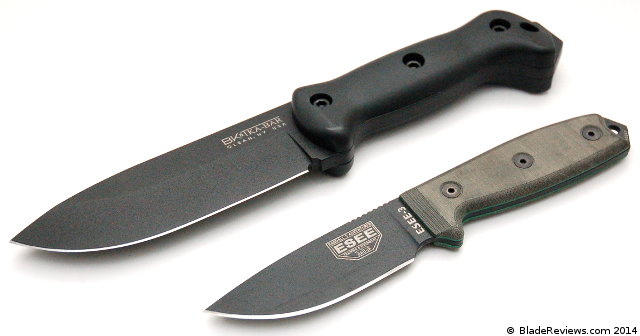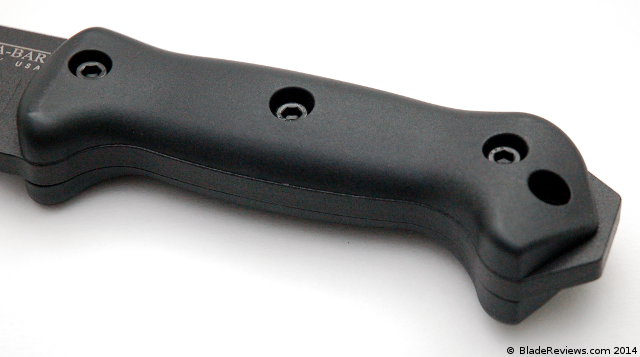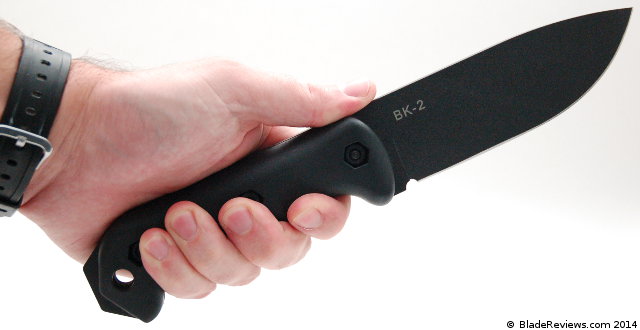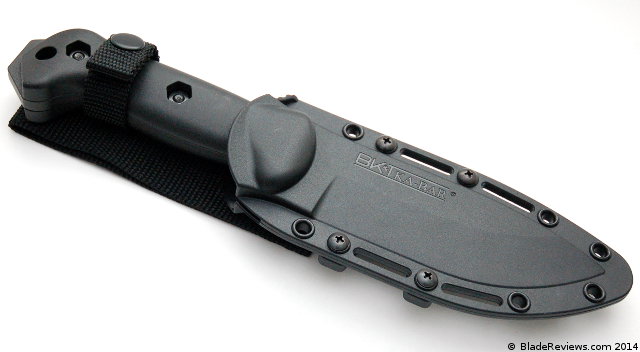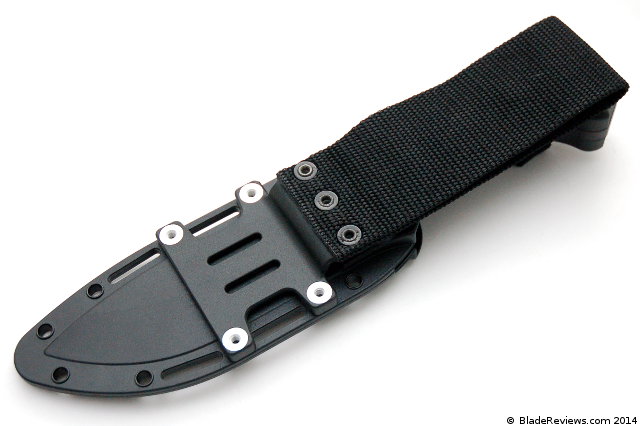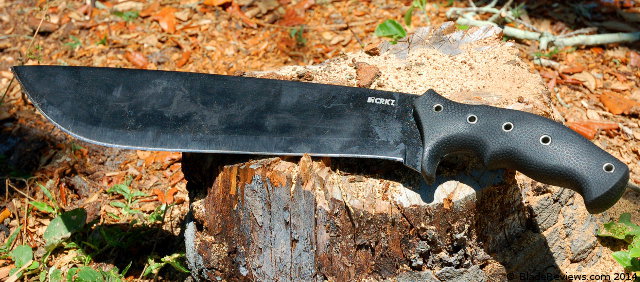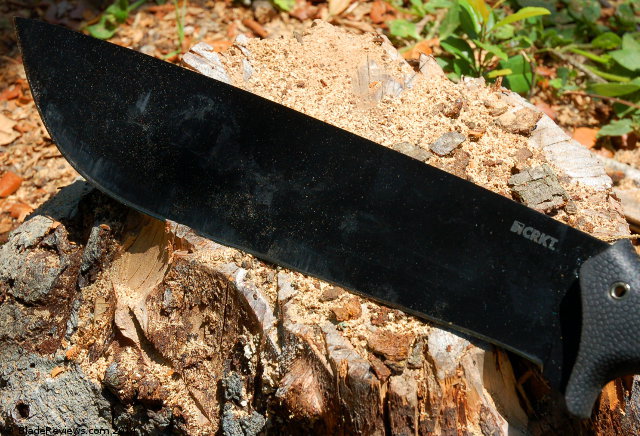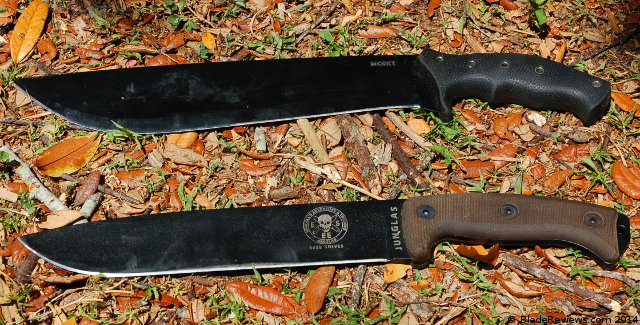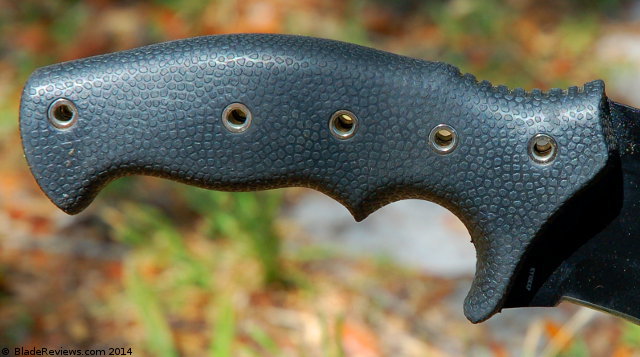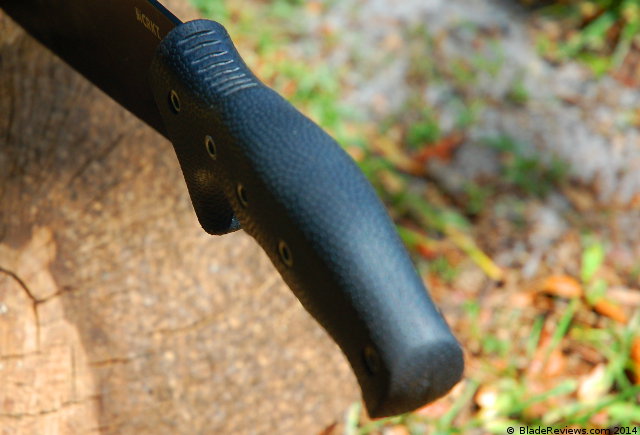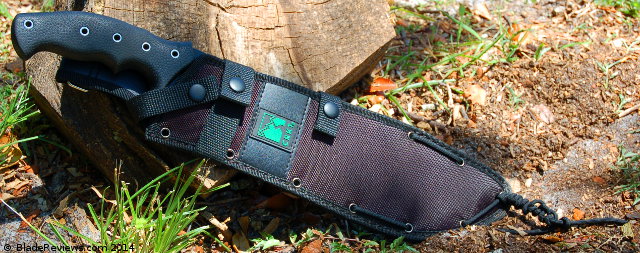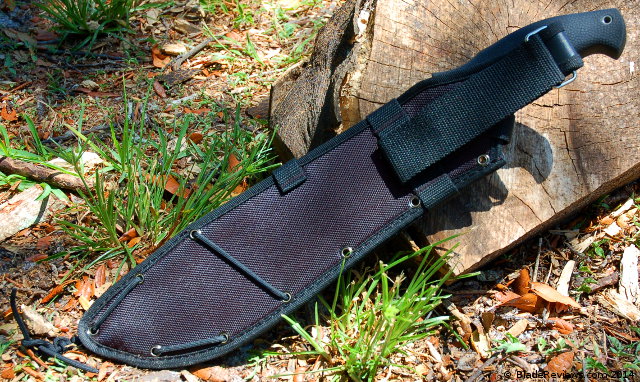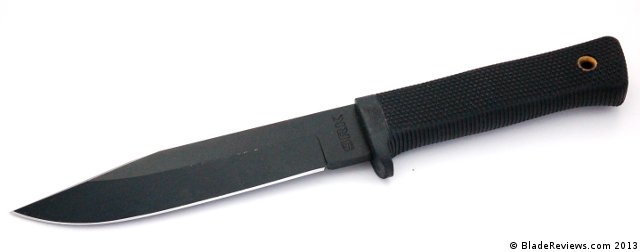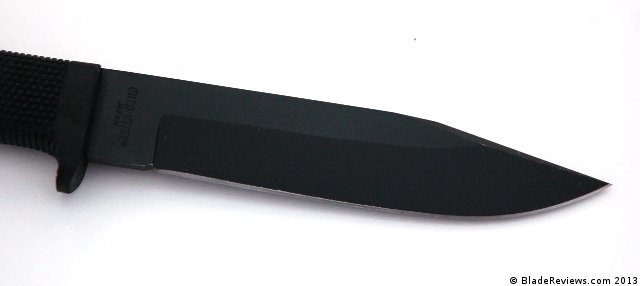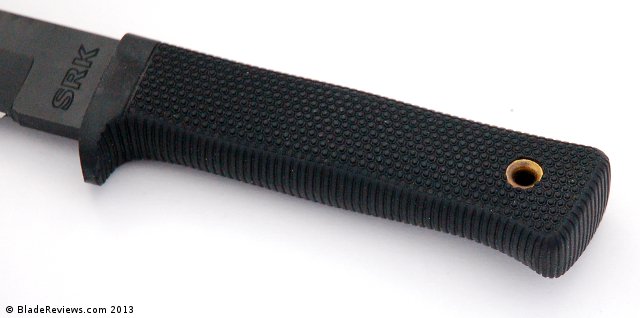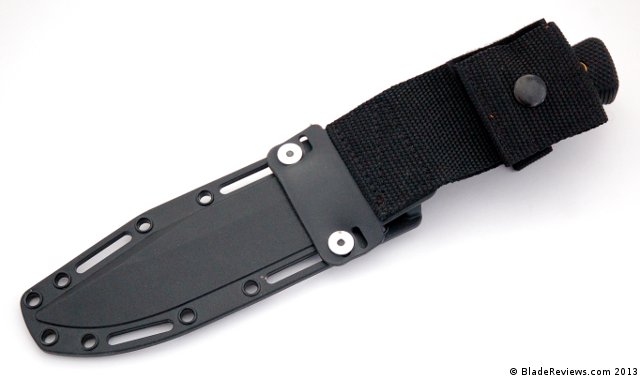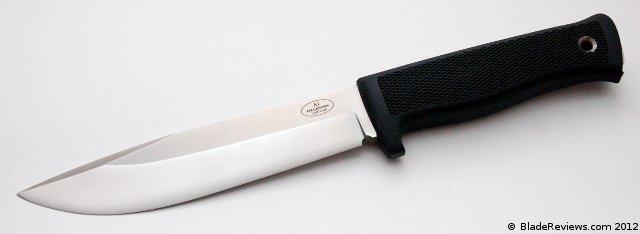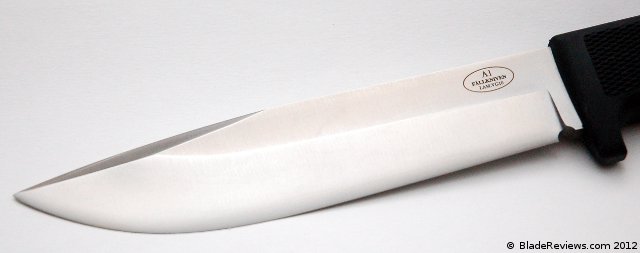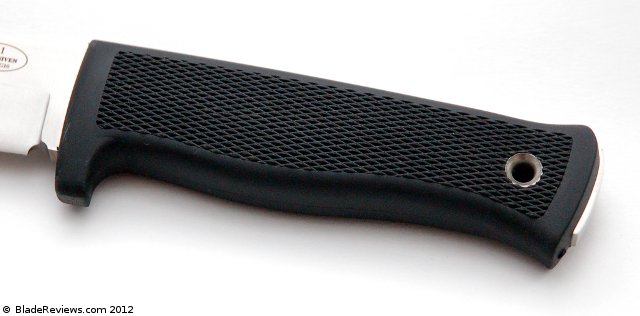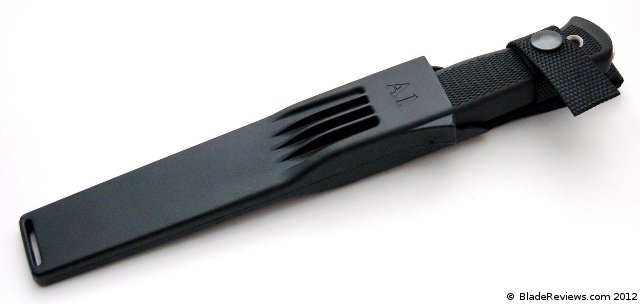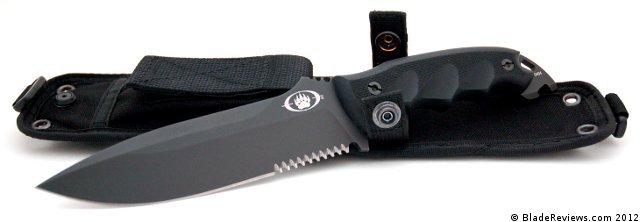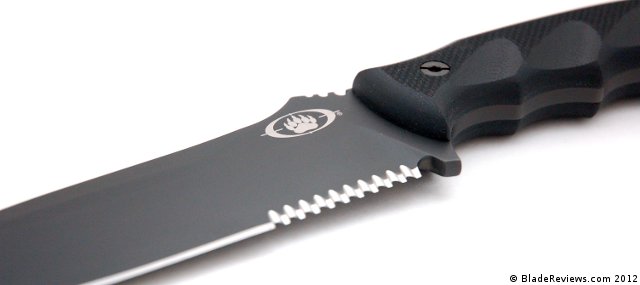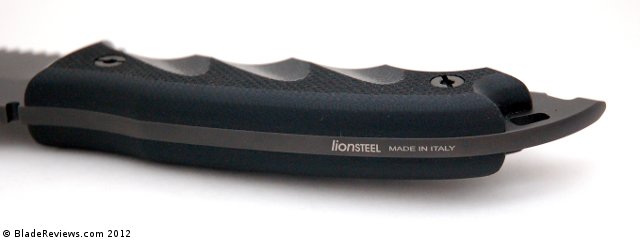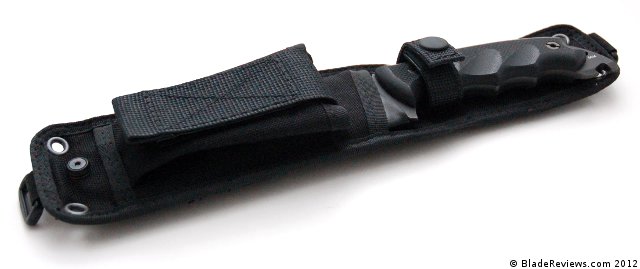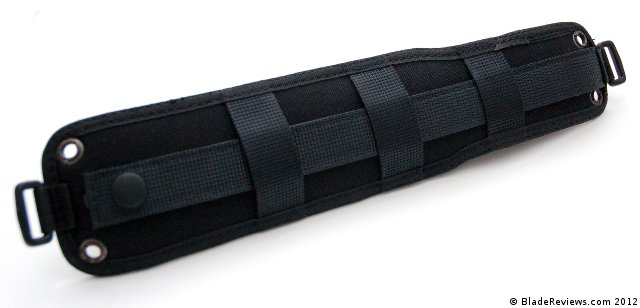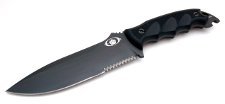Last Updated: September 25, 2018
I am not sure if I have the patience for a compact survival knife. I tend to favor a brute force approach when working in the outdoors. Maybe I am lazy, or stupid… or lazy and stupid… but when in doubt I often find myself reaching for the biggest, heaviest tool I can find.
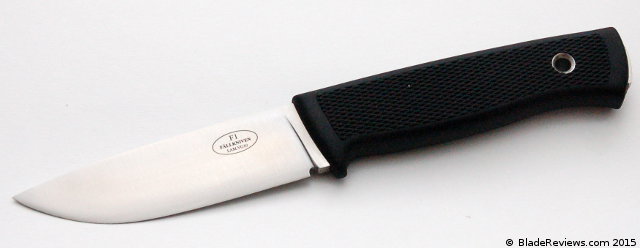
Buy the Fallkniven F1 at BladeHQ
That’s probably why I get such a kick out of knives like the Junglas and Ontario Machete. I get that heavy piece of steel in my hand and say, “Hey, I can probably chop down a tree with this thing,” and then proceed to blast whatever lies in my path. Hours later my shoulder is aching, my shirt is soaked through with sweat, but I still have a smile on my face. What I lack in technique I try to make up for with pure stubbornness. I have the same problem when I go fishing.
So I may not be the best guy to review the Fallkniven F1. It’s an elegant smallish fixed blade designed in Sweden, and made in Japan. The Scandinavians are folks who really seem to appreciate the great outdoors. The Japanese are extremely passionate about pretty much everything, and have an extraordinarily rich culture of blademaking. Both have a zen like approach to nature (and life) that I could never match.
I have previously reviewed the Fallkniven A1, and offhand the A1 seems to be more my speed. It’s not a big chopper, but it’s a meaty knife and a solid performer. The F1 is much smaller, and working with it has forced me to slow down for a moment, explore the possibility that less is more, and, god forbid, try to cultivate some technique when using my tools.
General Dimensions and Blade Details
The F1 has an overall length of 8.3″, a 3.8″ blade, weighs 6 ounces, and is made in Japan. Fallkniven calls the F1 the Pilot’s Survival Knife, and this is the standard issue fixed blade for the Swedish Air Force. So this is a knife that presumably needs to be small enough to fit on your person while in the confines of a military aircraft, yet be effective enough for soldiers to rely on worst case scenarios like a downed airplane deep behind enemy lines. For us civilians this could be a camp knife, or a knife for hiking, hunting, and exploring the great outdoors.
Here is a shot of the F1 next to the S1 and A1. The F1 is of course on the bottom:
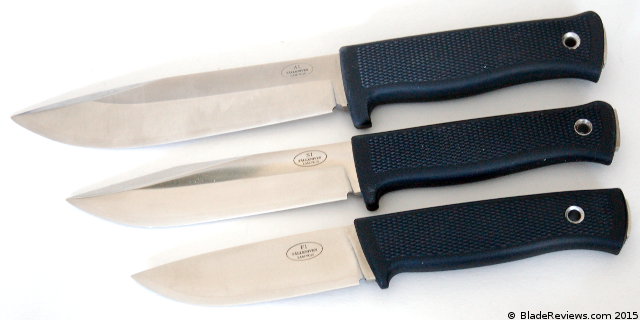
The blade of the F1 is a simple drop point with a full convex grind. The blade shape is simple. There are no organic shapes, no swedges, no jimping. Just traditional drop point awesomeness with your choice of a bright satin finish or a black CeraKoted blade. This is about as simple as it gets.
Blade thickness is a generous 4.5mm, and this combined with the full convex grind allows the F1 in some ways to function like a larger knife. I adore the convex grind. It can be used to pop open small pieces of wood, yet it cuts deeply into material and can be used for more detail oriented tasks.
The F1 features a laminated VG10 blade. Twin slabs of 420J stainless flank a VG10 core (also stainless). 420J is tougher than VG10, whereas VG10 is harder and better for edge retention than 420J. The idea is to combine 420J with the VG10 to make an overall tougher knife with the edge holding qualities of VG10.
Using VG10 for a survival knife is a hotly contested issue. I have found that VG10 is fine for little EDC knives like the Dragonfly 2, but if you troll the forums there is great debate as to whether it is an appropriate choice for an outdoor fixed blade.
Personally, I think that this is an instance where geometry makes the biggest difference. The convex edge gives the VG10 greater resilience and durability, and belies it softer qualities. Still, you need to be careful with this knife. If you are batoning with it, make sure you aren’t batoning on top of sand or a rock pile or something. Put a piece of wood underneath whatever you are trying to cut and understand that if the edge comes in contact with a rock, the edge will likely lose. With this strategy in mind, I have not had issues with the edge on any of my Fallkniven knives chipping out.
Here is another size comparison with the F1 next to the ESEE-3:
As far as edge retention is concerned, I have found that the VG10 blade holds up well to wood and meat. It doesn’t last as long when cutting fibrous materials like cardboard. Sharpening is very easy. I mostly strop the knife, and occasionally freehand the edge with a fine Sharpmaker stone. I know that the sandpaper and mousepad method is a popular way to sharpen a convex edge.
Fallkniven also offers this knife in their “3G” configuration. 3G is another 420J laminate with a core of Super Gold Powder Steel (SGPS), a high end powdered steel by Japanese manufacturer Takefu. They heat treat the SGPS to 62HRc. By way of contrast the VG10 version is taken up to 59HRc. The main benefit to the 3G version is it gives you greater edge retention. Apparently durability is about the same although I have no hands on experience with this version of the knife. The downside is that the 3G version retails for $100 more than the F1.
Personally, it was not worth the extra money to spring for the 3G version. If I used this knife every day I could see where the upgraded version has its appeal. I look forward to checking out the SGPS in depth when I eventually pick up a Fallkniven U2.
Handle and Ergonomics
The F1’s handle is made of Thermorun, a high density plastic. Thermorun has a slightly rubbery feel to it, and the handle all but completely encases the tang of the knife. About an 1/8″ of tang sticks out from the pommel, which can be used for hammering/crushing things. There is also a large sleeved lanyard hole that easily accommodates 550 cord. The handle has a strong diamond texture on the sides, while the top an bottom of the handle are left untextured.
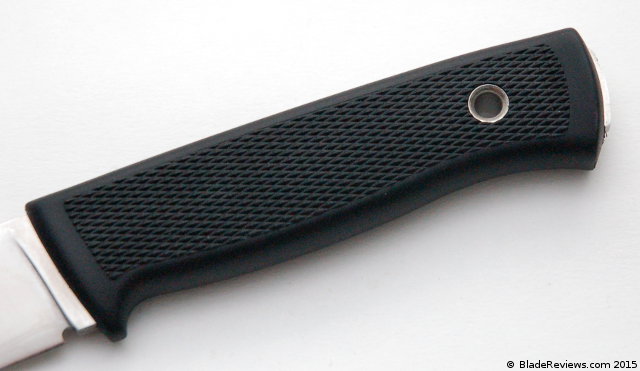
All said construction of the handle is very simple and solid. I can’t detect any gaps in between where the handle and blade join together. There has been no cracking splitting has occurred after months of ownership and use. Like the rest of the knife, the handle has a very basic and utilitarian feel to it.
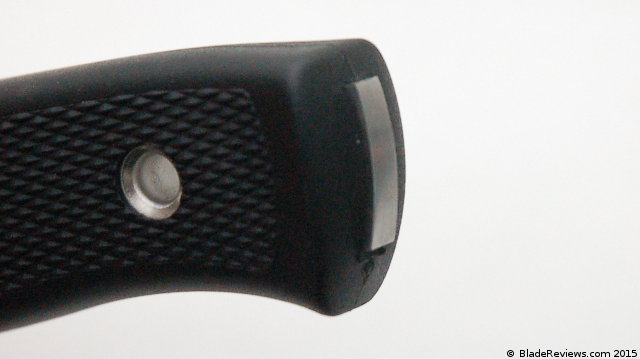
The F1 is a comfortable knife to use. The diamond texture helps lock your hand in place, and the broad flat spine is perfect for your thumb. The handle shape is simple and it will accommodate all sorts of hand sizes. There is no jimping. I mostly tested the F1 on wood, cardboard, and by trying it out with some light food prep. At all times I felt comfortable and in control of the knife. There were no issues with hot spots.
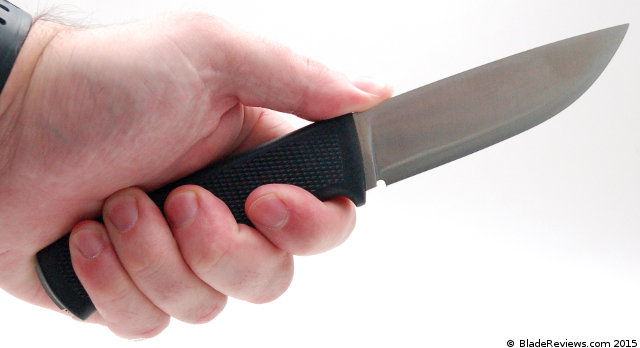
Sheath
The F1 comes with a plastic or leather sheath. Shown here is the leather sheath, although the plastic sheath is essentially a scaled down version of the sheath on my A1, so you can check that review out to get a little more information on Fallkniven’s zytel sheathes. The leather used for this sheath is thick, sturdy, and exudes quality. It’s a high quality no-nonsense sheath that has been finished simply. The belt loop is non-removable and the blade is held in place with a fold over button clasp. The blade doesn’t rattle or move around at all inside the leather sheath. It’s very secure and a nice option for people who prefer a more traditional belt sheath.
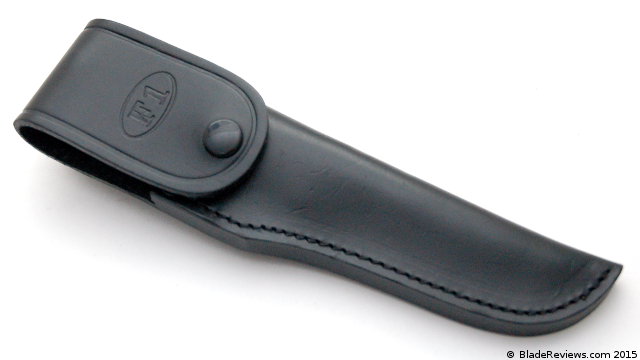
When I reviewed the A1 2 years ago I ragged on the plastic sheath a little. I felt like the sheath was a little flimsy, especially when paired with such a sturdy knife. The blade also rattled around in the sheath, which some people use as a metric to for sheath quality (this is kind of stupid when you think about it, although I’m guilty of pointing out whether the blade rattles in the sheath).
Opinions are subject to change and mine has evolved over the years. While Fallkniven’s plastic sheathes are lightweight, it doesn’t mean they aren’t of high quality. The plastic on my A1’s sheath has held up tremendously well and is very light and practical. Apparently it is a good choice for cold climates and will perform better than a leather or Kydex sheath in sub-freezing temperatures. Since I live in Florida I have been unable to really test that out.
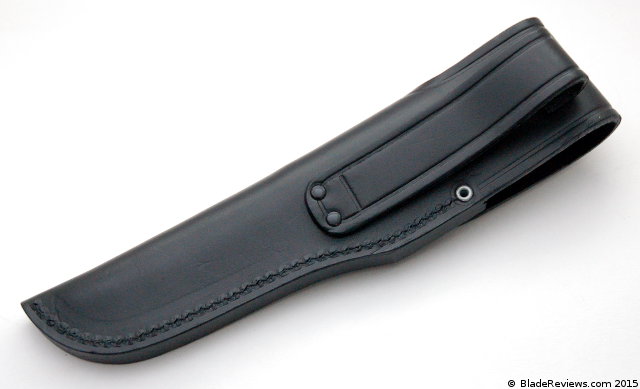
Fallkniven F1 Review – Final Thoughts
You don’t have to be a level 10 bushcrafter to realize that this is a very nice knife. The F1 strikes a good balance of being lightweight and manageable yet high performance. The convex blade works miracles with wood, and the handle does a great job of not getting in the way. To me that is what makes an ideal working knife. It should not be a chore or an obstacle in your path – you should be able to actually use the thing. The F1, much like the A1 when I reviewed it, seems to invite use.
I may still favor the bigger knives for my outdoor exploits, but The F1 is an all around performer and a pleasure to work with. This is an excellent knife for camping or survival and has rightfully earned its reputation as a no-nonsense tool. It has also earned a spot on my recommended survival knives page, which is about as high of an endorsement as I can offer.
- 8 1/4" overall.
- 3 3/4" laminate VG-10 stainless drop point blade with satin finish.
- Black checkered Thermorun elastomer handle with visible tang end and lanyard hole.
- Country of Origin: Sweden
- Includes Black Zytel sheath.
I recommend purchasing the Fallkniven F1 at Amazon and BladeHQ. Please consider that purchasing anything through any of the links on this website helps support BladeReviews.com, and keeps the site going. As always, any and all support is greatly appreciated. Thank you very much.
